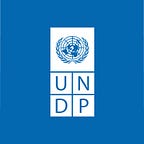How can data save lives in Asia Pacific?
Meet Shairi Mathur, Programme Specialist for Disaster Recovery and Response, UNDP Bangkok Regional Hub
What’s your job at UNDP?
I help UNDP’s Country Offices to build programmes that reduce the risks associated with disasters, and I manage the regional preparedness for recovery portfolio.
How does your work change people’s lives?
I work on a regional level so I help to shape different projects across Asia Pacific that prepare communities for disaster and improve the recovery process. My takeaway from all of these projects is: data saves lives. You can only know what you’re up against and take action if you have accurate and reliable data.
In the Maldives, for example, we partnered with a drone company to do so-called “risk mapping” for the Laamu atoll. With most islands lying only about one meter above sea level, the Maldives are extremely vulnerable to any changes in climate. Risk maps help identify vulnerable and safe areas. During a flood, an area identified with coastal erosion would be unsafe, but an area where soil is protected by mangrove plantations and shifting sands would be safe. That kind of real time information can be a matter of survival once a disaster hits.
However, mapping only 11 of the 160 inhabited islands would normally take us almost a year. That’s time we can’t afford. A drone on the other hand can map a whole island in just one day. That’s a great progress that will be able to save lives in the future!
Tell us about a person you’ve met and why their particular story had an impact on you?
The first time I saw Rooxa, a young woman of no more than 20 years of age, she was driving a motorcycle, wearing a pair of sunglasses and her hair was flying in the wind. I was in Mabaidoo, a town in Laamu atoll in the Maldives with a team of drone experts. We were there to train Island Council members to use drones for risk mapping of the area. Rooxa was one of the two women on the Island Council. A fast learner, she was quick to spot her own home when she flew the drone.
On our last day of the training I finally got to know her story. She was eight years old when a tsunami washed away her home and took away her family. She practically brought up her younger brother all by herself. Against all odds, she persevered and continued with her studies. Today, she’s one of the few young women decision makers in her community. She lives in her own home with her husband. She loves gadgets — like her motorbike and her smartphone— and now that she’s learned how to use drones, she wants one of her own. She’s one of the most significant women I’ve met. She didn’t dramatize what she went through. Her quiet confidence is her resilience. We are now friends on Facebook.
What are the major disaster risks in your region and what would help reduce these risks?
I live in the most disaster-prone region in the world. My work covers 24 different countries in Asia Pacific. All of them face destructive forces such as typhoons, floods, tsunamis, earthquakes, droughts and sea level rise. Many of these risks are amplified by climate change and urbanization. Ultimately what’s required to make our world a safer place is political will — the will to recognize that certain disaster risks exist, the will to build up know-how or partner with those who have the technical expertise, and the will to prioritize and invest in risk reduction.
What is one useful item you would take with you during a disaster?
Definitely a water purification bottle! You can survive for several days without food but not without water.
What specific action can people take to prepare for a disaster?
When a disaster hits, your survival instinct automatically kicks in. But being prepared is the key — especially for those who don’t have the ability to save up money or move to a safer area and who might end up losing everything in a disaster. Being prepared means knowing the disaster risks that could affect you, recognizing early warning signs and responding to them quickly, and having a survival plan in place when a disaster strikes.
By: Mirja Neumann
